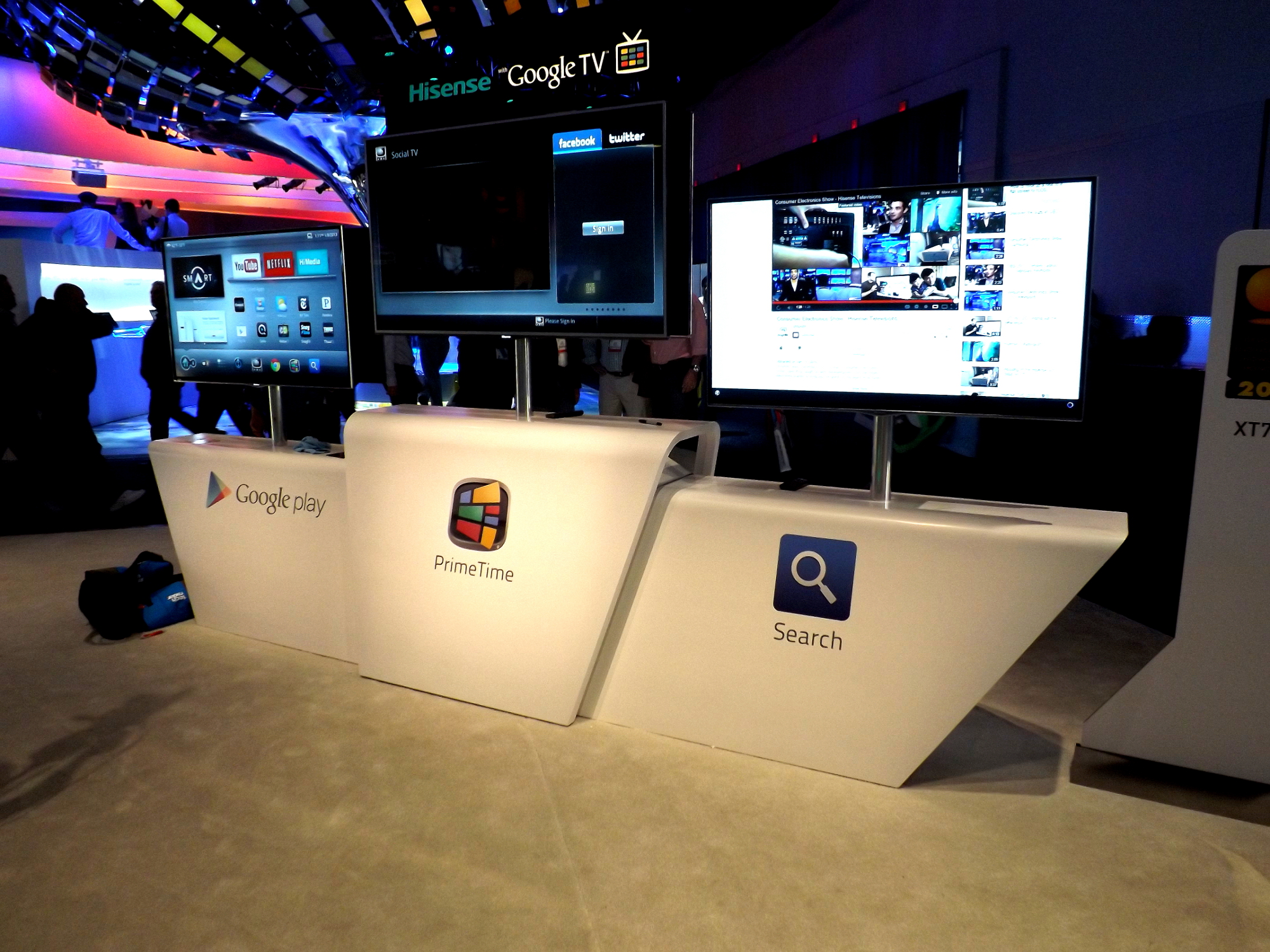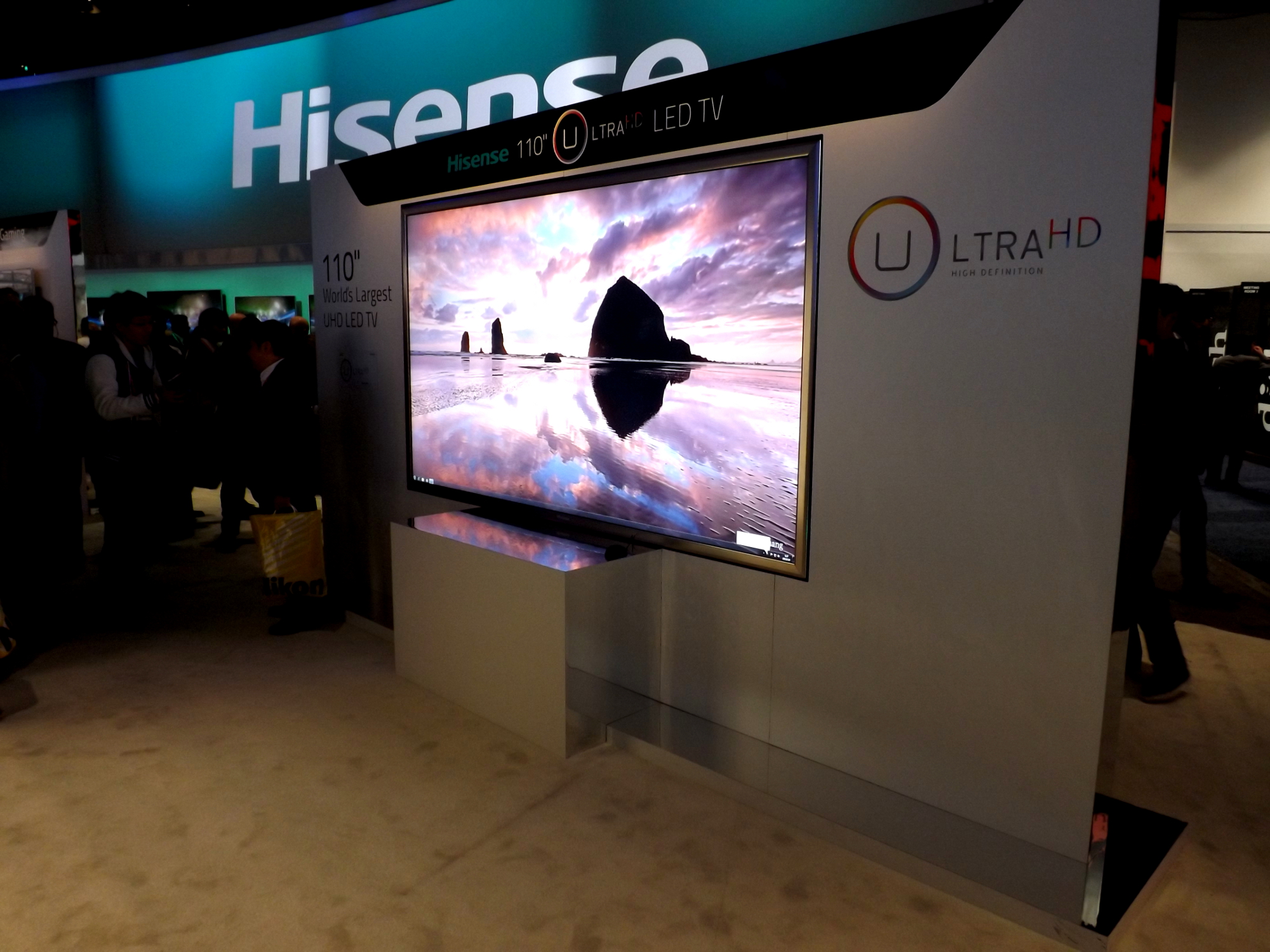Hisense Shows Transparent 3D, World's Largest U-LED TV
Hisense shows its Google TV lineup, a transparent 3D panel and more.
Despite the lure of Intel's magnificent laptop tree just a few "blocks" away, Hisense was my very first CES booth experience. This noob was lured in by Google TV because, let's face it, Google is seemingly trying to integrate itself into everything we own and do. I've been curious about the platform, and here was my chance.
First up, I found myself wandering over to the transparent 3D display. Essentially it allows the user to place anything behind the screen and display a 3D image in the foreground. The demo unit was a 40-inch screen with a landscape model placed behind it which was clearly visible through the screen. It was interesting enough, but you need glasses to correctly view the 3D effect. The application? Advertising most likely.
In addition to the transparent 3D display, other tech on display included transparent touch, a smart refrigerator, gesture and voice controlled HDTVs, and a "multi-screen play" feature which allows users to connect Hisense tablets and smart phones to Hisense HDTVs wirelessly.
And then there's Google TV. Google was actually on hand to talk a little about the platform given that Hisense was showcasing its new XT780. The stand-alone set-top box acts as a pass-through, meaning it resides between your HDTV and your cable providers box. The new PrimeTime app will access not only your cable provider's guide, but all other internet based services. Your local cable access is also shown as a separate TV app residing next to Netflix, Youtube etc.
As expected, Google Play is accessible and will only pull up apps related to the platform. Google TV is so much like Android but not at the same time. The little hands on I had with it leads me to wonder why it hasn’t caught on like its tablet and smartphone bothers. It's a departure from the norm, I'm sure, but one that a connected world will eventually have to embrace.
Also on display was the world's largest Ultra HD LED TV measuring at 110-inches and a 84-inch Ultra HD LED TV (U-LED). There's was also a large assortment of smartphones, tablets and other HDTVs like the just-announced Roku-Ready model. There was even a glasses-free HDTV that worked, but moving positions caused a weird ripple effect on the screen.
Here's what Hisense announced for the show:
Get Tom's Hardware's best news and in-depth reviews, straight to your inbox.
* Hisense Introduces Roku Ready Televisions for 2013
* Hisense Unveils XT780 TV with Google TV at CES 2013
* Hisense Unveils Full Lineup of Exquisite XT880 UHD 3D Smart TVs at CES 2013
* Hisense Unveils Stunning Flagship XT900 Series of Feature-Packed 65”, 84”, 110” U-LED Televisions at CES 2013
* Marvell and Global Consumer Electronics Leader Hisense Introduce New Generation of Smart TVs and Set-top Boxes for Google TV

Kevin Parrish has over a decade of experience as a writer, editor, and product tester. His work focused on computer hardware, networking equipment, smartphones, tablets, gaming consoles, and other internet-connected devices. His work has appeared in Tom's Hardware, Tom's Guide, Maximum PC, Digital Trends, Android Authority, How-To Geek, Lifewire, and others.
-
Agges See through 3D, so it is very flat but we have to install a wall of light behind the TV to get the full effect.. Think I have seen this before just without the 3D (wasn't there something before LCDs?).Reply -
It's not transparent. It renders what is behind it in virtual 3D, so it's virtually transparent.Reply
-
a1b2c3 There was even a glasses-free HDTV that worked....My HDTV was always glasses free; but it wasn't 3D.Reply -
old_newbie a1b2c3There was even a glasses-free HDTV that worked....My HDTV was always glasses free; but it wasn't 3D.Reply
LOL. All of my HDTVs unfortunately have required glasses. I lose the HD effect without them. -
f-14 apprently somebody made a HUGE mistake, you can't view this from any of the other 5 axis's it is required for something to be 3DReply
look at the 3D printers for christ sake, they don't make a 1 axis object and call it 3D. a piece of paper is 3D a photo on one side of the paper is not 3D same goes for TV's
another einstein theory proven yet again "stupidity has no limits"



